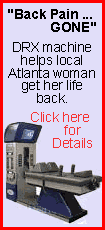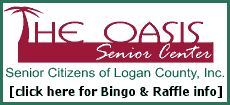|
 True emergency cases -- gunshot or car crash victims with serious injuries
-- are still rushed in for treatment. But patients like Rickey Washington, a diabetic concerned about numbness in his hands and feet, find it fairly simple to sign in by computer. True emergency cases -- gunshot or car crash victims with serious injuries
-- are still rushed in for treatment. But patients like Rickey Washington, a diabetic concerned about numbness in his hands and feet, find it fairly simple to sign in by computer.
"Once you look and see, it's kind of easy," said Washington, 44.
Besides offering patients more privacy, the kiosks should help nurses identify the most urgent cases. Newark Beth Israel Medical Center in New Jersey plans to install check-in kiosks in its ER within the next couple months.
"Patients don't always know if their symptom is potentially bad or serious," said Dr. Marc Borenstein, chairman and residency program director for the department of emergency medicine at Beth Israel.
Parkland's administrators say patients have been spared the long check-in lines since the kiosks arrived. The hospital's ER handles about 300 cases a day.

"It's helping us find the people that we need to see right now," said Jennifer Hay, unit manager for the ER department.
Patients spend about eight minutes at the kiosks, using touch screens to enter their name, age, and other personal information. The computer shows the patient a list of ailments to choose from, like "pain" or "fever and/or chills" and a list of body parts to indicate where it hurts.
Previously, a nurse checked in patients and took their vital signs as lines at the ER got longer and frustration mounted.
"If it's getting people to be able to sit down and not be in a long line, then it's good," said Dr. Brian Keaton, president of the American College of Emergency Physicians.
[to top of second column]

 |

Once the patient's problem is entered into the system, it pops up on a screen accessible to the nurses. Those with chest pains, stroke symptoms or other worrisome complaints take priority. But for patients with lesser complaints, even computer kiosks can't eliminate the "wait" from ER waiting rooms. It still often takes a couple of hours for a nurse to check their vital signs, and several more to see a doctor.
John Lovelock, research director for industry research firm Gartner Inc., said patients may initially hesitate to use the kiosks, but repeat customers realize they're saving time.
"I think the public is absolutely ready for this," he said.
One family practice and urgent care center in Cookeville, Tenn., has used computer kiosks and hand-held electronic devices to get patient information since opening just over a year ago, said Kara Hufstedler, a systems manager for Satellite Med.
"We had some people who loved it. We had some people who didn't. The staff helps anyone who needs it," she said.

Brandie Glover, 27, of Dallas, said she first thought the kiosks at Parkland were "weird."
"I thought it was kind of impersonal, but at the same time, it's a quicker process," said Glover, who came to the ER with neck and ear pain. But after waiting for more than three hours without seeing a doctor, Glover decided to leave without getting treated.
Hays said that shortening the check-in time only addresses part of the problem. Like other hospitals, she said, Parkland is also trying to find ways to improve the overall wait time in its emergency room.
___
Parkland Memorial Hospital: http://www.parklandhospital.com/
[Associated Press; by Jamie
Stengle]
Copyright 2007 The Associated Press. All rights reserved.
This material may not be published, broadcast, rewritten or
redistributed.
 |